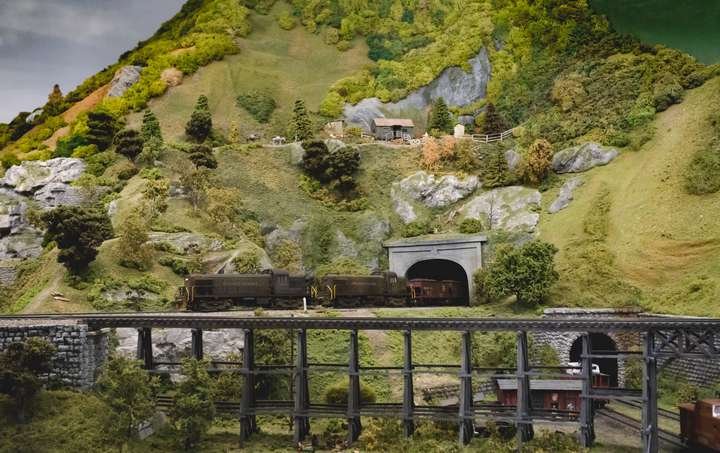They are a terrific way to enjoy the railway hobby. You can choose from various scales, including HO and Z. These scales will vary in price and availability. There are also many different accessories available. They are fun and easy to create! These models can be purchased at model train stores or online.

HO scale
When you build a model train layout, several factors must be considered. One of the most important considerations is the space you have available for the layout. The other factor is the availability of the model train stock. It is important to also consider your personal preference.
If you have limited space, you can use a smaller scale, but you may find that you will have a tough time achieving the exact details you want. You can purchase a variety of different HO scale model trains online.
Z scale
Z scale models are the smallest of all train sizes and are often found in European markets. These USA trains are made from high-tech materials like brass etched or laser-cut wood and are also available in varied materials like Hydrocal and resin. This scale also allows for more elaborate layouts and smoother curves.
While the Z scale is not inherently less reliable than other trains, the main problems can be found in the track and locomotive motor. This is due to the small size of the wheels and the fact that even the smallest piece of debris can cause a problem. This is why keeping the track clean and flat is particularly important. This will ensure that the trains run smoothly for years to come.

Building tips
Model trail building is an activity that can be both fun and challenging. The most important part of trail construction is the hand tools. The right tool can make a hard job much easier. Here are some tips to help you build an accurate and enjoyable trail. Using hand tools is important to make your job easier.
Context can be especially important in the trail-building process. This can help the model predict entity names and distinguish between entity types. Context is also necessary to understand entity behavior. It may be ineffective if the model is not trained to predict entity behavior.
Geotextile sheets
Geotextile sheets are a flexible and cost-effective way to reinforce your trail. These materials are strong enough to withstand the weight of props and can be easily repaired if damaged. Because of their flexibility, geotextile sheets can be used on various terrain types.
There are four main types of geotextile sheets: woven and non-woven. Each one has distinct characteristics. The first type is used for the construction of roads and is classified according to its tensile strength. These materials have different tensile strengths, elongation, and mass per unit area. Moreover, some geotextiles have different durability.
Retaining walls
The retaining walls used in real life are created by engineers to stabilize slopes and hold in place the track. These walls were built with materials available in the area and were durable enough to withstand the wear and tear of a railroad. Choose materials appropriate for the scale and style of your layout.
The first step in creating a retaining wall is to prepare the area where the wall will be placed. Use the wood railroad ties to create the retaining wall. If you don’t have these, you can use a plain sheet of Styrofoam packing material (https://www.pinterest.com/steveofoto1/model-trains/). Alternatively, you can paint real QuiKrete or Portland cement on the retaining wall.
Restoring the outslope
A proper outslope helps to prevent erosion, and a gently sloped trail is best for a water-friendly environment. Without an outslope, water will channel along the trail and cause it to erode the trail surface. In general, the outslope should be at least 5% and not more than 25%.
It is important to keep the grade within a reasonable range and to only use a maximum grade of 20% on short sections of the trail. Limits on steepness are site-specific and depend on soils, rainfall, and geology. A trail’s width and the easement will also determine the maximum rate of steepness.





